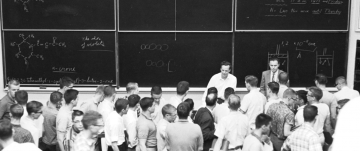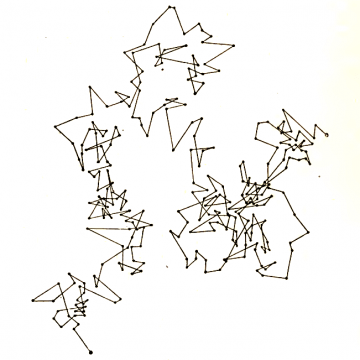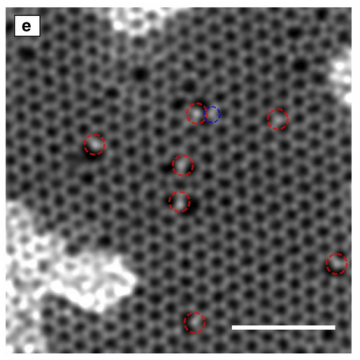by David Kordahl

Physicists, as a tribe, are overwhelmingly likely to believe that smart extraterrestrials exist, and are also overwhelmingly likely to believe that they haven’t visited Earth. I’m considered a bit of a kook by my physicist friends because I harbor genuine confusion on this point. I want to believe, but I also want unambiguous evidence—which unfortunately leaves me as a reluctant agnostic. Yet despite my self-consciously atypical attitude, this doesn’t stop me from talking with my physicist friends about alien possibilities. After all, even physicists who have decided that science fiction-type ETs don’t exist will often still let them creep into thought experiments. The alien thought experiment I’m most interested in, the one I won’t shut up about, involves a simple question. Suppose that the aliens were to land on our lawn. How much would they know about physics?
This question reveals a split that’s more fundamental than anything about aliens per se. It probes whether science lets us in on universal truths, and whether we can expect these truths to be universally accepted.
My own feeling is that if we were able to communicate with the aliens (this is already a leap), we shouldn’t expect their vision of nature to match our own. Their language, if any, might well seem “unscientific” to us, and it might require some effort to figure out what insights they could offer us, and what insights we could offer them. This, it seems to me, is not too dissimilar to the relationships we already share with our political rivals and housepets. But this pragmatic vision of interplanetary exchange is not widely shared by physicists. Many physicists are confident that physics isn’t just another human tool, and such confidence can be persuasive.
The confident physicist’s answer—an answer, anyway, that I’ve heard a few confident physicists give—is that the alien views on physics would, for the most part, be just like ours. Think about it, they say. To travel between stars, the aliens would have to go fast. Fast enough, and they’d push up against the speed of light as a cosmic speed limit, which would lead them to something close to the theory of relativity. And if their engines were powered by nuclear energy (and why wouldn’t they be?), they’d need something like quantum mechanics. And if their engines get hot…well, wouldn’t they need to devise something like thermodynamics to cope?
Thus the alien arrives on Earth as that most advanced of cosmic beings: a physics grad student. To me, this account is a little hard to take seriously.
Let’s blow on the straw man a bit. Suppose, to draw an Earthbound analogy, that a European explorer of an earlier age believed that moral virtue could only result from Christian faith. In his travels, such an explorer might have been surprised to meet putative non-Christians who, to his distress, were no less decent than his colleagues at home. So what would our hypothetical explorer conclude? If he were reasoning with all the rigor of a confident physicist, he might conclude that such decent individuals, despite their confusing protestations to the contrary, were simply closeted Christians.
As a physicist with somewhat less confidence, I suggest our relationship with the visiting aliens would be that of the European explorer to the moral foreigners. While foreign ethical codes might be recast in Christian terms, this would foreclose opportunities for a deeper understanding. So too with alien and Earthling physics: whether or not our framework could contain theirs, scientists should embrace any opportunity to see nature fresh.

Richard Feynman wraps up his first undergraduate lecture.
I admit that this idea isn’t terribly original. Readers of Thomas Kuhn have long appreciated how changes in the way natural systems are described—from geocentrism to heliocentrism in astronomy, say, or from classical to quantum mechanics as a backdrop for fundamental physics—can have enormous downstream effects. The film Arrival (and “Story of Your Life,” the Ted Chiang short story on which it was based) gave this point a poetic interpretation. In this film, understanding an unusual alien script gave its readers power to see through the illusion of time, and to save the world.
The hope implicit in a film like Arrival, or (arguably) in a philosophy like Kuhn’s, is that we shouldn’t simply expect convergence in science, and that conceptual breakthroughs may lead to fundamentally new ways of interacting with the world.1 I share this hope. Yet when I consider it coldly, as with the evidence for aliens, my agnosticism can trend toward doubt.
What—once again, just positing their existence—would the aliens know about physics? When I was thinking about this question on my own, away from any attempts to win an argument with other physicists over lunch, the opening salvo in Richard Feynman’s famous Lectures on Physics came to mind. This was not a statement about metaphysics, but a claim about facts:
If, in some cataclysm, all of scientific knowledge were to be destroyed, and only one sentence passed on to the next generations of creatures, what statement would contain the most information in the fewest words? I believe it is the atomic hypothesis (or the atomic fact, or whatever you wish to call it) that all things are made of atoms—little particles that move around in perpetual motion, attracting each other when they are a little distance apart, but repelling upon being squeezed into one another. In that one sentence, you will see, there is an enormous amount of information about the world, if just a little imagination and thinking are applied.
Well, how about it? Would the aliens know about atoms?
Many intelligent creatures on Earth, from elephants to octopi to human children, navigate their environment knowing nothing about atoms. The history of science contains many famous anti-atomists, with Ernst Mach, whose work Einstein credited as an inspiration for his theories of relativity, as the best-remembered exemplar. The debates over atomism hinged on various experimental claims and counter-claims, but the nub of Mach’s dismissal was to insist that the atoms themselves never seemed to show up in observations, only effects that atoms were thought to cause.
But some such effects were impressively described by atomic theory. The modern textbook example is that of Brownian motion, the incessant jiggling of dust particles in warm water. One of Einstein’s famous 1905 papers—alongside the other two introducing special relativity and the notion of photons as light particles—made quantitative predictions from the “atomic” theory. (Really, the point was that heat and motion of particles amounted to the same thing.) This prediction linked how far, on average, a particle should be expected to diffuse as it gets knocked around by the molecules surrounding it. Jean Perrin tested this prediction using an ultramicroscope, and published the results in his masterpiece, Les Atomes.


Left: In Les Atomes (1913), Jean Perrin tracked dye particles at equal time intervals as they diffused, and gave this as evidence for Einstein’s theory.
Right: A scanning transmission electron microscope (STEM) image reveals individual carbon atoms, and particular defects, in a graphene sample (Nature Communications, 2019).
In certain ways, the atoms that scientists came to accept, with their trapped-wave electrons surrounding their tiny, dense nuclei, have little to do with the microscopic billiard balls that Mach scorned.2 But as individual atoms became easier to manipulate and measure, they were progressively reified. For modern scientists, atoms are real—not fundamental particles, of course, but real in whatever sense chairs and tables are real, in the sense that, once seen, they become undeniable. One can hardly look at an electron micrograph of graphene, its honeycomb structure just disordered enough to be compellingly believable, and conclude that atoms are only fictions.
Yet even given all this, I’m still not confident about aliens and atoms. This is not to deny atoms, but to hope that they might not be the only thing.
What Feynman called “just a little imagination and thinking,” in what he supposed might be needed to go from the atomic hypothesis to its myriad consequences, might be the gestalt of modern science—something so intertwined with human thinking and human practices as not to translate to whatever aliens we might happen to meet. Those octopi of the methane seas, those plasmoids of black hole accretion discs (I’m reaching), might be as surprised by our description of nature as we are at theirs. This is no reason to give up on our way of doing science, or to deny atomic theory. But it is perhaps a reason not to immediately dismiss unscientific claims. Alien insights, even those coming from the Earth, might be useful yet.
1 I concede that this may be a “strong misreading,” in the sense of Harold Bloom. Contra my hopeful description, Arrival presents a story whose most distressing feature is its relentless determinism, and Kuhn presents a philosophy that some have criticized as reducing the rationalism of science to the irrationality of its makers.
2 In “Mach and Atomism,” Stephen G. Brush reports that upon witnessing individual α-particles fluoresce as they hit a screen in 1903, Mach apparently converted to atomism, if only briefly. Though he lived until 1916, Mach did not report any such change of heart in writing.
